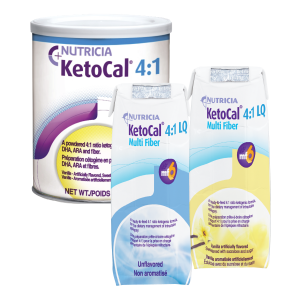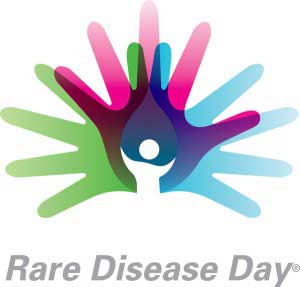
Lindsey Thompson, MS, RD, CSP, LD
We are pleased to share today’s guest blog post written by ketogenic dietitian and Nutricia keto ambassador Lindsey Thompson, MS, RD, CSP, LD. Thanks for sharing your tips for families preparing to start the ketogenic diet, Lindsey!
The ketogenic diet is an option for managing intractable epilepsy, and it often provides a liberating alternative for families struggling with heavy medication loads, side effects and persistent seizures. I have seen hundreds of families benefit from the diet in incredible ways both in terms of seizure control and quality of life. Nonetheless, starting the ketogenic diet can be a challenging transition for families for many reasons. Some of the challenges relate to things other than the actual food being provided, such as mealtime structure or schedule, child behaviors around mealtime or medication/supplement administration. The ketogenic diet is initiated during a several day inpatient stay (or possibly a series of outpatient visits) and many of these challenges cannot be worked through in this short period of time.
In my experience having worked with the ketogenic diet for a number of years, there are a lot of areas families can be working on before they “formally” start the diet that can make the transition onto the ketogenic diet a lot easier. Families appreciate working on these at home beforehand and come to the diet initiation much more prepared with what will be expected.
If your provider has started talking to you about the ketogenic diet or you in the process of getting scheduled to initiate, here are some tips to get your family ready:
Focus on Mealtime Structure
Once your child is on the ketogenic diet, he or she will be expected to consume all of the foods prepared for him/her at a scheduled meal or snack in order to consume his or her prescribed “ratio” of the diet. If your child is currently a “grazer” or very picky eater, this will be a difficult part of the transition. It will help to have put some structure in place before starting the ketogenic diet. Here are a few tips to implement this mealtime structure now:
- Create a schedule of meals and snacks for your child.
- Sit together at the table as a family for meals and snacks. Avoid allowing your child to eat on the couch, in front of a TV or “on-the-go”.
- Avoid food battles. Provide your child with a plate of food and give him or her 20-30 minutes to finish what they would like to eat from the foods you have provided. After 20-30 minutes, remove the plate of food and end the meal/snack time.
- Avoid offering alternatives to foods that are provided. If your child is very picky, have at least one “preferred” food available with the meal or snack, but avoid being a “short-order cook” for your child. If your child has not eaten a lot of the meal/snack at the end of the meal/snack, remind them that another meal or snack will be available at the next scheduled time. This will help your child to learn that they should eat what is available. When alternatives are provided, your child sees this as a reward for not eating the foods that have been provided and will make the picky behaviors worse.
- Offer water between meals and snacks. Avoid offering drinks with calories such as juice or milk between meals or snacks, as these can make your child just full enough to not be interested in the foods offered for their next meal/snack.
Encourage Fluid Intake
Fluids are an extremely important part of the ketogenic diet. Consumption of adequate fluid helps protect against the possible side effects of the diet such as constipation, metabolic acidosis and kidney stones. I have found that children who consume adequate fluid have a much easier transition onto the ketogenic diet and do not suffer as many side effects of the diet later.
- Ask your dietitian or pediatrician how much fluid your child needs each day (will be based on your child’s weight). Most of the time, our patients and families are very surprised by the amount of fluid their child needs each day and their child is getting less than what is expected.
- Offer water frequently, and recognize that your child may need to be prompted to drink more regularly.
- Get your child a special cup or bottle that he or she will enjoy drinking from.
- Discontinue sugary drinks such as juice and soda as these will not be an option on the ketogenic diet.
- If your child is struggling with water intake, introduce sugar free beverages (such as sugar free powders or drops) that will also be an option when your child is on the ketogenic diet. Dilute these with water as much as possible because they do contain small amounts of carbohydrate.
Start Brainstorming Ideas about Medication Administration
If your child is young, it is likely that his or her medicines or vitamins are currently in a liquid, chewable or gummy formulation. At the start of the ketogenic diet, these formulations will be changed to tablet or capsule forms because the liquids, chewables and gummies have too many carbohydrates (sugars) for someone on a ketogenic diet. For children who are not able to swallow tablets or capsules, their medicines must be crushed and administered. These are not very palatable and can be another challenge we would rather work through before the diet initiation.
- If your child seems ready to learn to swallow pills, now is the time! Before the diet start, you can practice with mini candies or other tasty treats which will not be an option after diet initiation.
- If possible, contact your epilepsy provider and have them change your child’s liquid medications to tablets/capsules so you are able to start practicing how your child will be able to consume these at home.
- Test different foods your child will tolerate the medicine being mixed into such as yogurt, applesauce or peanut butter. Once on the ketogenic diet, your dietitian can create “medication snacks” that would include the above foods mixed with a certain amount fat (such as applesauce and oil, yogurt and sour cream or peanut butter and butter).
- You can also try mixing the medicine into a small amount of a sugar free beverage that would be given via syringe.
Introduce Various Fats into your Child’s Diet
Once your child is on the ketogenic diet, high fat foods will comprise about 70-90% of his or her calories. It can be overwhelming for a child to be trying new foods for the first time when they are also in the hospital starting the ketogenic diet. If your child is not currently exposed to a variety of fats, give them a try now, so that you can let your dietitian know the fats your child prefers at diet start.
- Heavy whipping cream: most children on the ketogenic diet drink heavy cream instead of milk. To get started, offer a small amount (1 oz) diluted equally with water and a drop of liquid Stevia added for sweetness. You can also mix your child’s milk with a bit of cream to start the transition.
- Butter: melt over vegetables, meats or fruits
- Sour Cream: offer as a dipping sauce with a pinch of dried herbs or mix into yogurt
- Mayonnaise: make cold egg, chicken or tuna salads or use as a dipping sauce
- Peanut butter: mix with butter and offer on fruits or vegetables
- Vegetable oil (olive, safflower, grapeseed, or whatever oil is used in your home): can be used to cook with, mixed into any sauce (spaghetti sauce, barbeque sauce, ketchup) or atop meats, fruits and vegetables
The ketogenic diet can be a helpful and rewarding option for families struggling with seizures. Being prepared for the transition can make the diet initiation much more manageable, successful and enjoyable! I hope the above tips will be helpful in getting you ready to start. Good luck!
-Lindsey
I was paid by Nutricia for my time to write this blog post, however, my opinions are my own.
The ketogenic diet for epilepsy should be used under medical supervision.
 The ketogenic diet can help manage seizures in patients with refractory epilepsy. In fact, research shows that just over half of children on the ketogenic diet will have 50% or more improvement in seizures, about 1/3 of children will have over 90% improvement in seizures and about 10-15% will become seizure-free. While it can be helpful with seizure management, being on the ketogenic diet can be challenging at times. In today’s blog post, I will tell you a little about how KetoCal can be a helpful addition to the ketogenic diet.
The ketogenic diet can help manage seizures in patients with refractory epilepsy. In fact, research shows that just over half of children on the ketogenic diet will have 50% or more improvement in seizures, about 1/3 of children will have over 90% improvement in seizures and about 10-15% will become seizure-free. While it can be helpful with seizure management, being on the ketogenic diet can be challenging at times. In today’s blog post, I will tell you a little about how KetoCal can be a helpful addition to the ketogenic diet.

 Follow
Follow
